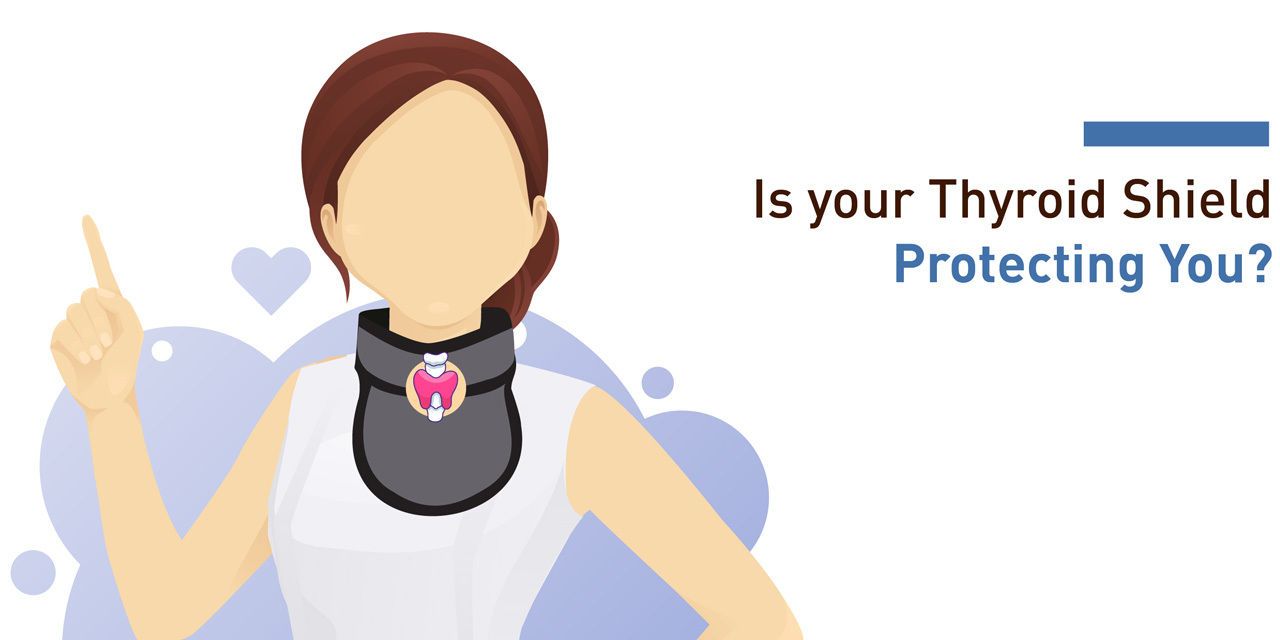The thyroid is a butterfly-shaped, endocrine gland located at the base of the neck, just above the collarbone. It is responsible for releasing hormones that regulate the rate of many activities of the body such as how fast the heart beats or how quickly calories are burnt. Speaking about radiation exposure, the thyroid is the most radiation-sensitive organ in the body. Medical data reveals many patients suffering from papillary thyroid cancer due to increased exposure to medical radiations in the neck region during diagnostics or therapeutics for both the patients and the operators. Keeping this in mind, a thyroid shield/collar has been included as an essential component of radiation protective gear.
A thyroid shield is designed such that the thyroid glands are kept safe and protected from harmful radiation exposure. Commonly, it is used in medical applications like CT scans, X-ray imaging, Dental X-rays, and Fluoroscopy. Not all medical work that uses radiation requires the medical personnel to wear a thyroid shield. When deciding on the need to wear thyroid shields, the individual must keep ALARA (As-Low-As-Reasonably-Achievable) principles in mind. ALARA principles focus on three factors: the time/duration of exposure if working around the radiation source; the distance between the radiation source and the exposed person; and if the shielding equipment is appropriate to provide radiation protection.
How to check if a thyroid shield is protecting you?
While selecting a thyroid shield or collar and confirming the complete protection offered by a thyroid shield, the healthcare professional must make note of the following points:
- Choice of the material by which shield is manufactured: A thyroid shield is made up of either lead or non-lead material. The latest lead thyroid collar is latex-free and provides standard radiation protection of 0.5mm Pb Equivalency.
- Designing of the thyroid shield: There are many existing thyroid shields available in the market that have possible risks associated with their fit. For instance, the visor-style thyroid collar most commonly used in CathLab suites and Operation theatres is manufactured such that they have holes in the protective material caused by stitching. The stitch holes are a necessity while designing the shield to hold the material pieces together. However, the radiation can penetrate directly through it and pass across the thyroid gland, thereby harming it. By looking at alternatives to this design, the person can minimize risks.
- The way the thyroid shield must be worn: A perfectly-fitted thyroid shield must be used to ensure that the entire thyroid area is well-protected. Some of the available thyroid shield design styles are meant to be loosely worn while some are recommended to be worn close to the neck. When purchasing a thyroid shield, try wearing it either loosely or tightly and check which way of wearing is more comfortable. The loose-fitting shields are designed to protect the thyroid entirely and even allow easy head movements.
Some quality thyroid shields worth choosing from:
Thyroid Shield Elegant
Kiran’s wide range of thyroid shields provide complete protection to the neck and sternum from ionizing Radiations. It provides reliable coverage and is considered a great choice for thyroid protection. It is designed with an adjustable fastener, velcro closure, and has lead equivalence 0.50mm Pb or 0.35mm Pb.
Thyroid Shield Harmony
It is a popular new collar design that fits in thyroid gland perfectly. Offers wide coverage and one size fits all. The lead equivalence is 0.50mm Pb or 0.35mm Pb.

